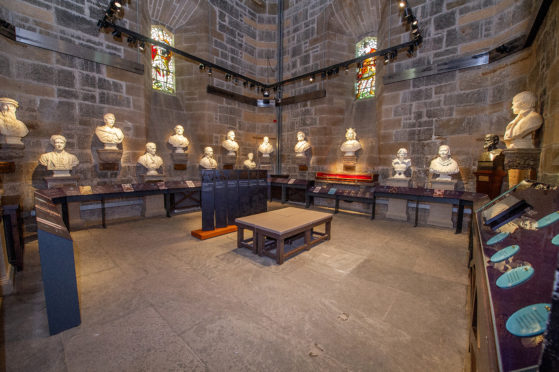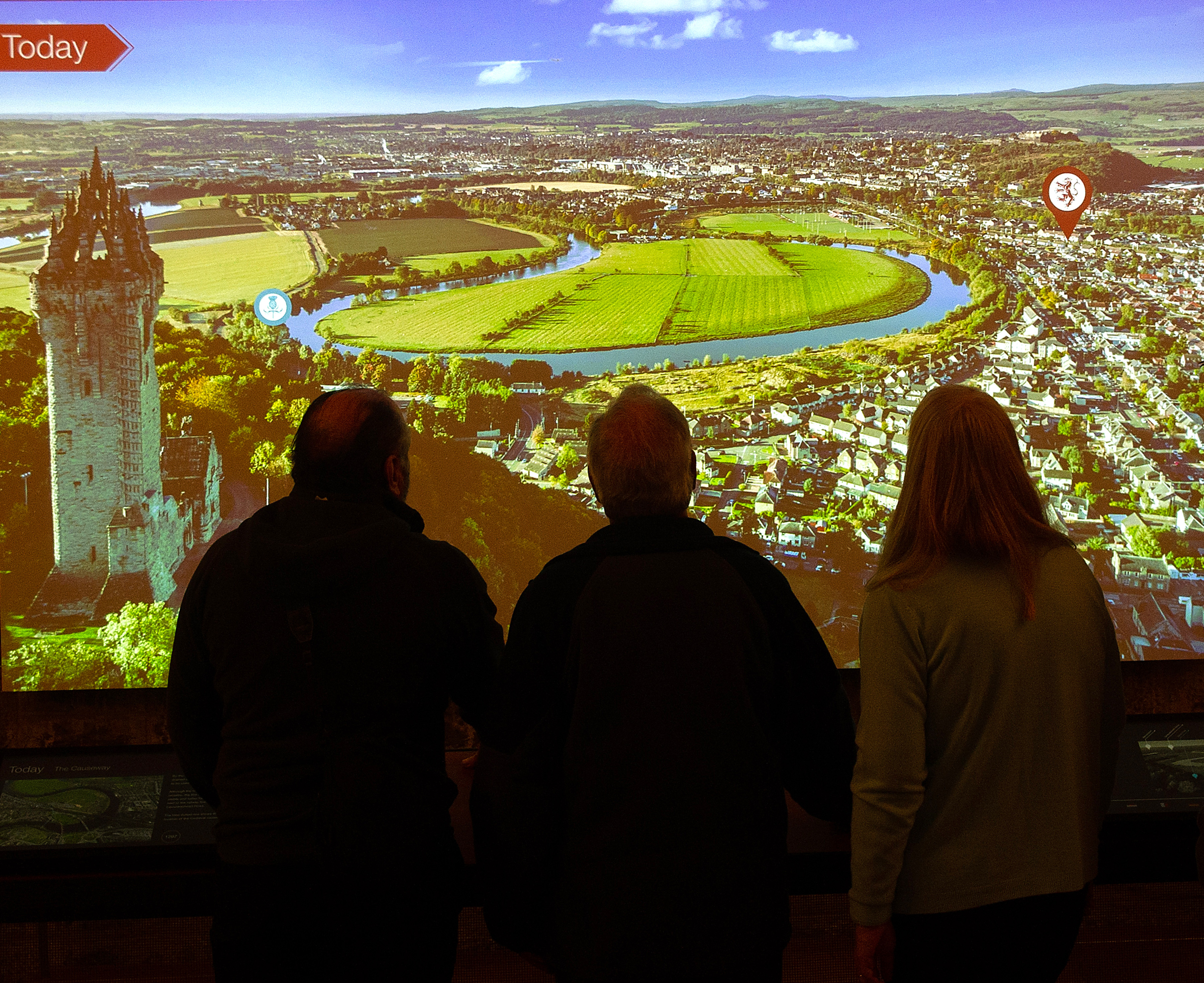The National Wallace Monument reopened to the public yesterday following a stunning £550,000 refurbishment to tell the story of Scotland’s national hero “better than ever before”.
The transformation of the 150-year-old attraction’s three galleries includes the Hall of Arms, which now houses Sir William Wallace’s medieval sword.
Hundreds of visitors to the upgraded landmark on the Abbey Craig at Stirling also experienced new exhibits including a bespoke animated film, a digital coat of arms design activity and immersive displays.
Among the highlights is a reconstruction in which visitors can see the transformation of the city’s landscape to how it appeared to Wallace in 1297 as he looked down from the hilltop before leading Scottish soldiers to victory over the might of the English army at the Battle of Stirling Bridge.
Brand-new sculptures of Victorian missionary Mary Slessor and the founder of the Maggie’s cancer centres, Maggie Keswick Jencks, have also been installed in the attraction’s “Hall of Heroes”.
The two women were selected to be cast in stone following a public vote in 2017 and are the first in the gallery depicting female figures.
For over a century, the gallery has hosted only the busts of great Scotsmen including Robert the Bruce and the poet Robert Burns.
The transformation has been managed by Stirling District Tourism (SDT), the charity that operates the historic attraction, and a team of specialist contractors led by Edinburgh-based designers Studioarc.
Zillah Jamieson, SDT Chair, said: “In the Monument’s 150th anniversary year, we wanted to tell the story of William Wallace better than it has ever been told in the past.
>> Keep up to date with the latest news with The P&J newsletter
“The upgraded exhibition spaces will resonate with modern audiences from all over the world, through dynamic storytelling and digital enhancements.
“We are honoured to play our part in preserving the legacy of William Wallace for generations to come.”
In The Hall of Arms, visitors can see “Wallace; A Hero in The Making”, a dramatic new animated film introducing the story of the medieval patriot and martyr. The famous “Wallace sword” is also displayed on this level.
In The Royal Chamber, the uppermost gallery, visitors learn how the Battle of Stirling Bridge was won, and the weapons and tactics used by both armies.
Visitors can also design their own Coat of Arms, projected onto a battle-shield.
Lauren Drill, 26, a teacher from Philadelphia touring Scotland with a US rugby side, was among the first visitors to the newly reopened attraction.
She said: “It’s really cool. This is my first time ever in Scotland and we were watching Braveheart on the bus. We were really excited to learn about William Wallace and see where the real life events actually happened.”
Lyndsey Bowditch, a director of exhibition designers StudioArc, who took on the challenge of redeveloping the interiors, said: “Wallace has been revered as a Scottish hero for 700 years.
“He’s one of the few who challenged the tyranny and might of Edward I, but most of what we know of Wallace comes from contemporary accounts, mostly created by his enemies.
“We do know that he possessed extraordinary personal ability and remarkable conviction. Within less than a year, Wallace rose from relative insignificance to become the Guardian of Scotland, and exercise power on behalf of the absent king.
“At the heart of Wallace’s story is his success defeating the English army against all the odds at the Battle of Stirling Bridge in September 1297.”
The 220ft Gothic tower first opened to the public in 1869 as a tribute to the 13th century hero.
Designed by Glasgow architect John Thomas Rochead, it was constructed between 1861 and 1869 at a cost of £18,000.
The Monument is now one of Scotland’s most popular landmarks, attracting 140,000 visitors per year, many of whom climb the 246 steps that lead to the crown at the top.
On top of the £550,000 internal refurbishment, a further £515,000 is being spent on external restorations, including the 132-year-old bronze statue of Wallace that stands over the Monument’s entrance.
The external conservation work is expected to be completed by the end of next month, when scaffolding surrounding the base of the Monument will be removed.
The attraction will celebrate its 150th anniversary celebrations in September.


